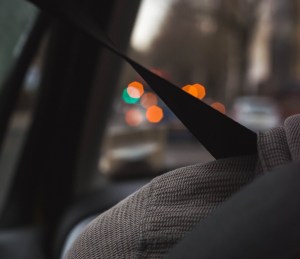
Photo by Sam Rudkin-Millichamp on Unspla
By Nick VinZant, quotewizard.com/news
Seat belts save lives. It’s a message millions of Americans have taken to heart over the last decade. Our team of analysts found that seat belt use has increased by as much as 17% in some states over the last decade. However, we also found that seat belt use is declining in some states. This decline is concerning because nearly half of all traffic fatalities involve someone who wasn’t wearing a seat belt.
Key findings:
- Montana, Rhode Island and Arkansas have had the highest increases in seat belt usage.
- Seat belt use in Mississippi, Texas and Washington has declined since 2012.
- Nearly 50% of fatal crashes involve someone not wearing a seat belt.
- Hawaii, California, Georgia and Oregon have the highest seat belt usage of any state.
Changes in seat belt use
Montana, Washington and New Hampshire are the three states that really stand out when it comes to changes in seat belt use over the last decade. Montana has seen the largest increase at 17%. Washington has seen the largest decrease at 4%. And seat belt use in New Hampshire remains stubbornly low. Only 71% of people in New Hampshire wear a seat belt, and that’s after a 3% increase that began in 2012.
| State | Seat belt use in 2019 | % change since 2012 |
|---|---|---|
| Montana | 89% | 17% |
| Rhode Island | 88% | 14% |
| Arkansas | 82% | 14% |
| South Dakota | 75% | 13% |
| Wisconsin | 90% | 13% |
| Massachusetts | 82% | 12% |
| Missouri | 88% | 10% |
| Louisiana | 88% | 10% |
| Arizona | 91% | 10% |
| Utah | 90% | 10% |
| Tennessee | 92% | 10% |
Seat belt use in each state
Hawaii currently has the highest percentage of people who wear seat belts. But if we look at average seat belt use since 2012, nearly 97% of Oregon residents have been wearing seat belts. New Hampshire has the lowest current and average seat belt use, followed by South Dakota and Wyoming.
| State | Current seat belt use | Average seat belt use since 2012 |
|---|---|---|
| U.S. average | 91% | 89% |
| Hawaii | 97% | 95% |
| California | 96% | 96% |
| Georgia | 96% | 96% |
| Oregon | 96% | 97% |
| Indiana | 95% | 93% |
| Iowa | 95% | 93% |
| Michigan | 94% | 94% |
| Illinois | 94% | 94% |
| New York | 94% | 92% |
| Nevada | 94% | 92% |
How many lives are saved by seat belts each year
People who don’t wear seat belts are significantly more likely to be involved in fatal crashes. Nationwide, nearly 44% of fatal crashes involve someone not wearing a seat belt. New Hampshire, Missouri and Montana have the highest percentages of unstrained fatalities. Utah, Minnesota and Oregon have the lowest percentages of unrestrained fatalities and some of the highest rates of seat belt use. Not counted in the totals below are the number of lives saved because someone one was wearing a seat belt. It’s estimated that seat belts save around 15,000 lives a year.
| State | Total fatalities in 2019 | Unrestrained fatalities | % of total fatalities where person was unrestrained |
|---|---|---|---|
| New Hampshire | 61 | 38 | 62% |
| Missouri | 580 | 343 | 59% |
| Montana | 118 | 67 | 57% |
| Mississippi | 504 | 276 | 55% |
| Virginia | 564 | 303 | 54% |
| South Dakota | 72 | 38 | 53% |
| Alabama | 676 | 355 | 53% |
| Rhode Island | 35 | 18 | 51% |
| Colorado | 379 | 193 | 51% |
| Louisiana | 460 | 234 | 51% |
| Kentucky | 529 | 265 | 50% |
| The numbers shown here represent only daytime fatalities where authorities were able to decisively determine if someone was wearing a seat belt. The total number of fatalities in the calendar year used was 36,096. |
Seat belt laws in each state
Seat belt laws are divided into two groups: primary and secondary. A primary seat belt law means that a law enforcement officer can ticket a driver or passenger for not wearing a seat belt without any other violation taking place. A secondary seat belt law, means that you or your passenger can be ticketed for not wearing a seat belt, but only after getting pulled over for another traffic violation.
We found 34 states that have primary seat belt laws, 15 states that have secondary seat belt laws and one state (New Hampshire) that has no seat belt law. These laws mainly apply to people sitting in the front seat but some states also have seat belt laws for passengers in the back seat. Many seat belt laws also depend on a person’s age.
| State | Seat belt law |
|---|---|
| Alabama | Primary front seat, secondary rear seat |
| Alaska | Primary – all occupants |
| Arizona | Secondary – front seat only |
| Arkansas | Primary – front seat only |
| California | Primary – all occupants |
| Colorado | Secondary – front seat only |
| Connecticut | Primary front seat, secondary rear seat |
| Delaware | Primary – all occupants |
| Florida | Primary – front seat only |
| Georgia | Primary – front seat only |
| Hawaii | Primary – all occupants |
Overall, seat belt use is improving across the United States. Nationwide, seat belt use is up 3%, and 10 states have improved their seat belt use by 10% or more. There is still work to be done, however: Seat belt use in New Hampshire and parts of the midwest remain stubbornly low, despite those areas having some of the highest rates of unrestrained fatalities. Traffic fatalities reached a 13-year high in 2020; drivers will need to slow down and buckle up if we want to reduce this deadly trend.
Bodily injury limits and seat belt usage
Car crashes without seat belts lead to more serious injuries, expensive medical bills and more time away from work. But even if you always “click it” before driving, the other driver and passengers you’re involved in a crash with may not. You want to make sure your bodily injury (BI) limits are high enough to cover even the most expensive third-party medical bills and lost wages.
According to the CDC, in 2010 non-fatal crash injuries to drivers and passengers resulted in over $48 billion in lifetime medical and work-loss costs. Bodily injury liability covers medical bills for any third-party injuries resulting from a car accident you’re at-fault for. It also covers legal fees if you’re sued by someone injured in the accident. If you’re at-fault for an accident, you’re legally responsible for paying if someone is injured, and that cost will likely be higher if they weren’t wearing a seatbelt. You’re required to at least carry your state’s minimum BI limits, but if you can, you should purchase higher limits.
Methodology
QuoteWizard used seat belt and traffic fatality data from the National Highway Traffic Safety Administration to determine seat belt use and traffic fatalities in each state. We then compared seat belt use from 2012 to 2019 to determine the percentage increase/decrease in use.
The number of unrestrained fatalities was compiled using data from the Insurance Institute for Highway Safety.
Help us Continue to tell OUR Story and join the AFRO family as a member – subscribers are now members! Join here!
The post Seat belt use is declining in Maryland appeared first on AFRO American Newspapers .











